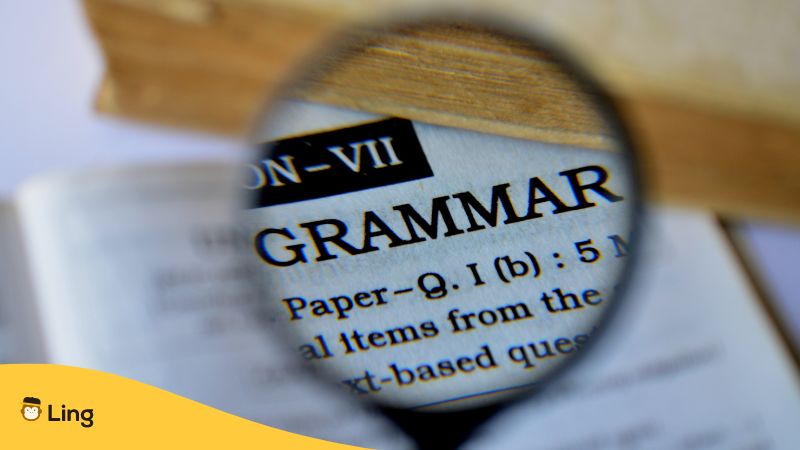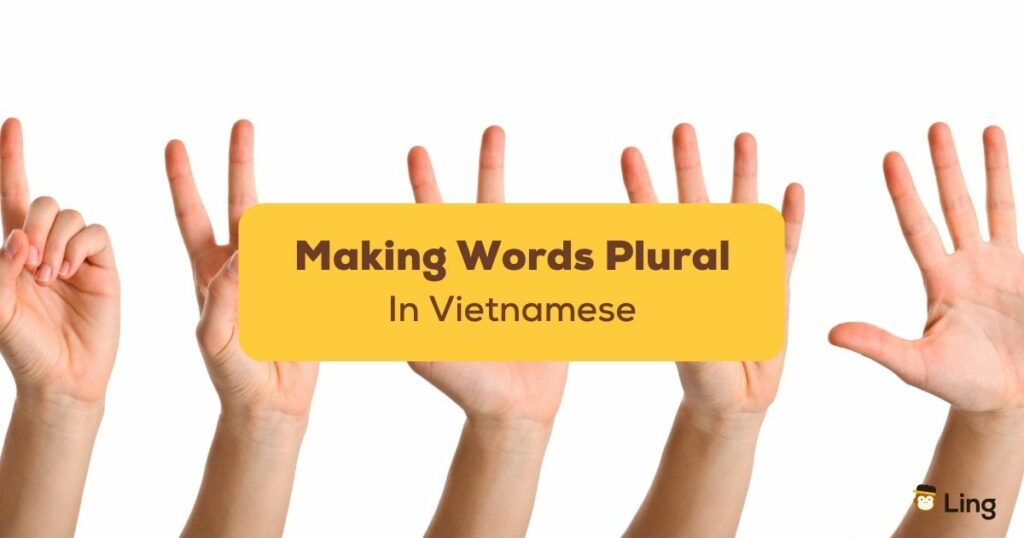Hey there! If you’re looking to level up your Vietnamese language skills, you’ve come to the right place. This guide is all about making Vietnamese words plural, and trust us; it’s easier than you think. Pluralization might seem tricky at first, but with a bit of practice, you’ll master it in no time.
In this article, we’ll break down the process, so you’ll be more confident in your Vietnamese conversations. Plus, we’ll share some cool tips and tricks to make learning plurals a breeze. So, grab a cup of your favorite drink, and let’s dive into the wonderful world of Vietnamese plurals together. Are you ready? Let’s do this!
Basics Of Vietnamese Grammar
So, you’ve decided to dive into the vibrant world of Vietnamese vocabulary and grammar, huh? That’s awesome! Let’s start by getting a feel for the basic structure of Vietnamese grammar and see how it compares to English. Don’t worry; we’ll keep things easy to understand. You’ll be making Vietnamese words plural like a pro in no time!
First things first, Vietnamese is an analytic language, meaning it relies on word order and prepositions instead of inflections (like verb conjugations) to convey meaning. Cool, right? So, unlike English, you won’t have to stress over endless verb forms or tenses.
Now, let’s talk about the same word order mentioned earlier. In English, we typically follow a subject-verb-object (SVO) pattern, like the English sentence “I eat noodles.” Vietnamese follows the same subject-verb pattern, making it relatively easy to wrap your head around. For example, “Tôi ăn phở” also follows the SVO sentence structure: “I (Tôi) eat (ăn) noodles (phở).”
Here’s something interesting! In Vietnamese, adjectives come after Vietnamese nouns, which is the opposite of English. So, while we say “a red ball” in English, you’d say “quả bóng đỏ” in Vietnamese, in literal translation, “ball red.”
One more cool thing about Vietnamese grammar: there is no literal translation of subject pronouns and articles like “a,” “an,” or “the.” So, you won’t have to worry about choosing the right one or dealing with pesky agreement rules.
All in all, Vietnamese and English share some similarities in grammar, but there are also unique aspects to each language. Don’t worry, though! With a bit of practice and this handy guide, you’ll be mastering the art of making Vietnamese words plural and navigating the ins and outs of Vietnamese grammar in no time.
Ready to learn more? Let’s keep going!

Vietnamese Plural Formation: General Rules
Welcome to the wonderful world of Vietnamese plurals! We know that learning a new language can be challenging, but we’re here to make it as fun and easy as possible.
First off, here’s some great news: Vietnamese plurals are way more straightforward than English plurals. Unlike English, Vietnamese doesn’t change the noun itself to make it plural. Pretty cool, huh?
So, how do you form Vietnamese plurals?
The Magic Of “Những” And “Các”
When it comes to making words plural in Vietnamese, “những” and “các” are your new best friends. These two basic words make all the difference when you want to talk about more than one something.
Here’s the deal:
“Những” is used when you’re talking about a specific group of things or people. For example, if you want to say “the students” in Vietnamese translation, you’d say “những học sinh.” It’s like you’re pointing at a particular group and saying, “Those students right there.”
“Các” is used when you’re referring to a more general group. So, if you want to say “students” in general, you’d say “các học sinh.” It’s like saying, “You know, students in general, not just any specific group.”
Examples to get you started:
- “Những chiếc xe”: the cars (specific group)
- “Các chiếc xe”: cars in general
- “Những bài hát”: the songs (specific playlist, for example)
- “Các bài hát”: songs in general
Count ‘Em Up: Using Numbers For Specific Quantities
Here’s the good news: Using numbers for specific quantities in Vietnamese is a breeze. Just place the number right before the noun, and you’re good to go! For example, “sáu cái bánh” means “six cakes.” How easy is that?
Practice makes perfect, so let’s try a few more examples:
- “Một con chó”: one dog
- “Hai cái ghế”: two chairs
- “Bốn quả táo”: four apples
- “Năm chiếc áo”: five shirts
One thing to keep in mind: When using numbers, you’ll also need to use the grammatically correct classifier (more on that in another section). Classifiers are words that indicate the type of noun, like “con” for animals or “cái” for objects. So, when you say “hai cái ghế,” the classifier “cái” is used because “ghế” (chair) is an object.
In a nutshell, to form Vietnamese plurals using specific quantities, just remember these two steps:
- Place the number before the noun.
- Use the appropriate classifier.
Classifier Magic: Giving Vietnamese Nouns Some Extra Flair
In Vietnamese, classifiers are small words that give more information about a noun. Think of them as “a piece of” or “a glass of” in English. These classifiers help categorize uncountable nouns and make your sentences more precise. The best part? They’re super fun to learn!
Here’s a quick guide with some common classifiers:
- “Con”: animals (e.g., “con mèo” = a cat)
- “Quả” or “trái”: round-shaped fruits (e.g., “quả táo” = an apple)
- “Cây”: plants and trees (e.g., “cây thông” = a pine tree)
- “Cái” or “chiếc”: most inanimate objects (e.g., “cái bàn” = a table, “chiếc xe” = a car)
Now let’s see how classifiers work with plurals:
- “Những con mèo”: the cats (specific group)
- “Ba con chó”: three dogs
- “Các quả táo”: apples in general
Remember that classifiers can vary by region and context. So don’t worry if you come across different ones. The key is to practice and be open to learning new classifiers as you go.
In summary, to form Vietnamese plurals using classifiers:
- Choose the appropriate classifier for the noun.
- Place it before the noun.
- Use “những” or “các” for indefinite plurals or numbers for specific quantities.

Tips And Tricks For Making Vietnamese Words Plural
You’ve made it this far, and now it’s time for some insider tips and tricks to help you master Vietnamese plurals like a pro. These nuggets of wisdom will make your journey to fluency much smoother. So, let’s get to it!
Tip #1: Context Is Key
When listening to or reading Vietnamese, pay close attention to the context. Sometimes, plurals can be implied without using “những,” “các,” or a specific number. So, be ready to pick up on these subtleties and get a feel for the intended meaning.
Tip #2: Embrace The Variety
As you’ve probably noticed, Vietnamese has various ways to make plurals, from using “những” and “các” to numbers and classifiers. Embrace this variety and practice using each method in your conversations. The more you practice, the more natural it will become.
Tip #3: Keep A Classifier Cheat Sheet
With so many classifiers in Vietnamese, it’s easy to get overwhelmed. Create a cheat sheet with the most common classifiers and their associated nouns. This way, you can quickly reference it whenever you’re unsure which classifier to use.
Tip #4: Learn From Native Speakers
One of the best ways to learn any language is to immerse yourself in it. Listen to Vietnamese music, watch Vietnamese movies, or chat with native speakers. This exposure will help you pick up on the nuances of plurals and classifiers in real-life situations.
Tip #5: Practice, Practice, Practice
Lastly, remember the golden rule of language learning: practice! The more you practice forming plurals, the better you’ll get. Write sentences using the Vietnamese alphabet, make flashcards, or even practice speaking to yourself in the mirror. Every little bit helps!

Celebrate Your Plural Prowess
And that’s a wrap, language champs! You’ve made it through our guide to mastering the art of making Vietnamese words plural. By now, you’ve got a solid grasp on using numbers, classifiers, and other nifty tips to form plurals like a true Vietnamese speaker.
Remember, learning a language is a journey filled with ups and downs. It’s important to celebrate your progress, no matter how small. Be patient with yourself, keep practicing, and don’t forget to have fun along the way.
As you continue learning Vietnamese, we hope these lessons on plurals are a valuable addition to your language-learning toolkit. Stay curious, keep learning, and most importantly, enjoy the amazing connections you’ll make through your newfound language skills.
Learn Vietnamese With Ling
Meet Ling app – your new best buddy in learning languages! The Ling app makes conquering a new language super fun and easy. No more old-school textbooks, just cool interactive lessons.
Plus, there are a lot of languages to choose from, so you’ll never get bored. Jump into the fantastic world of the Ling app and start connecting with people from all over. Give it a try today!
Download on App Store or Play Store now!























